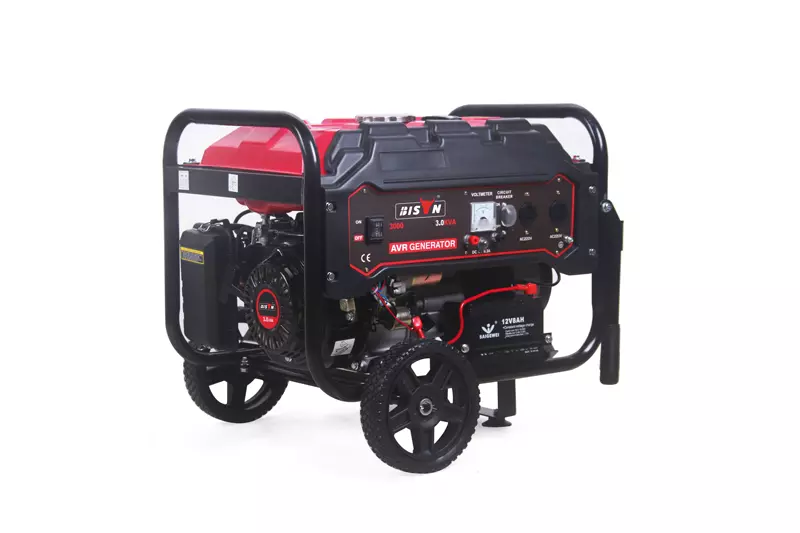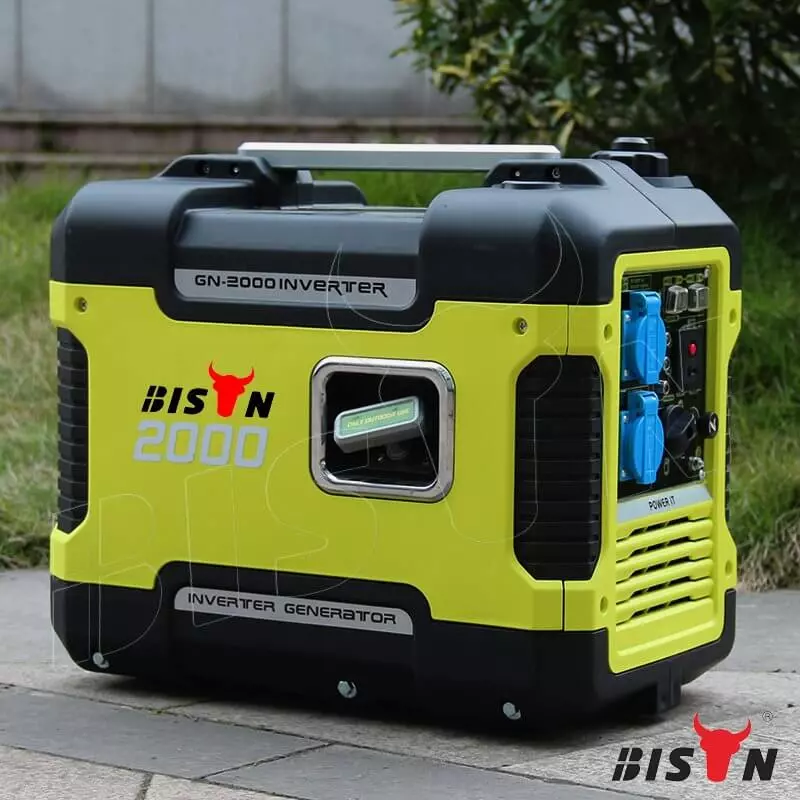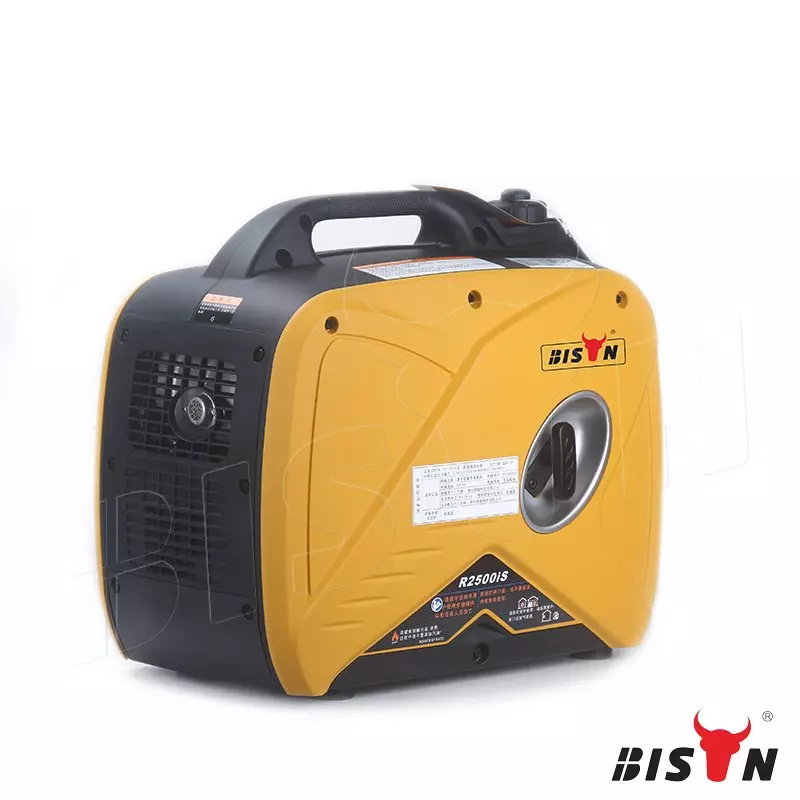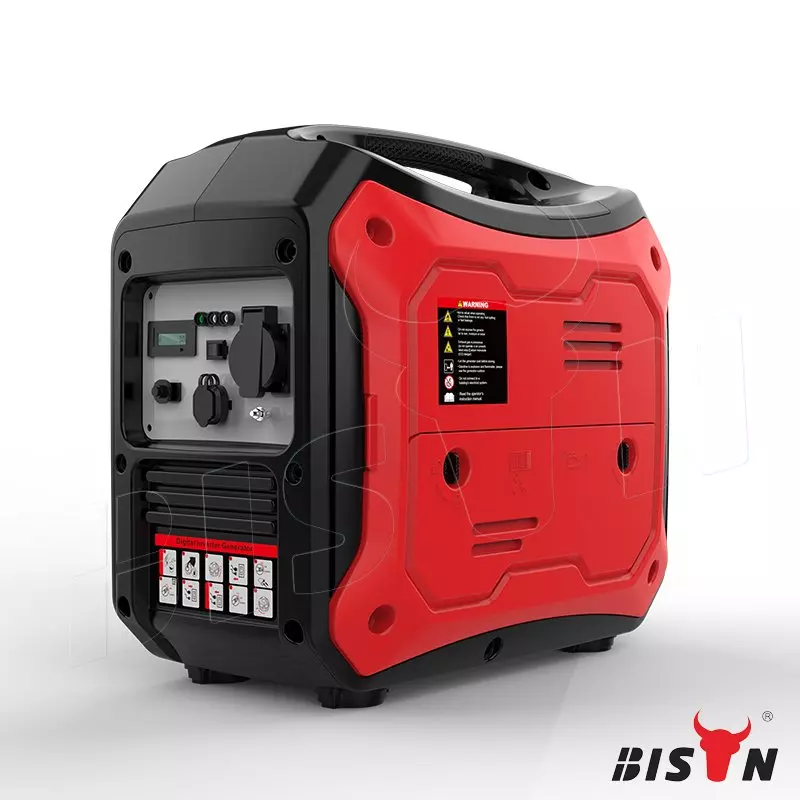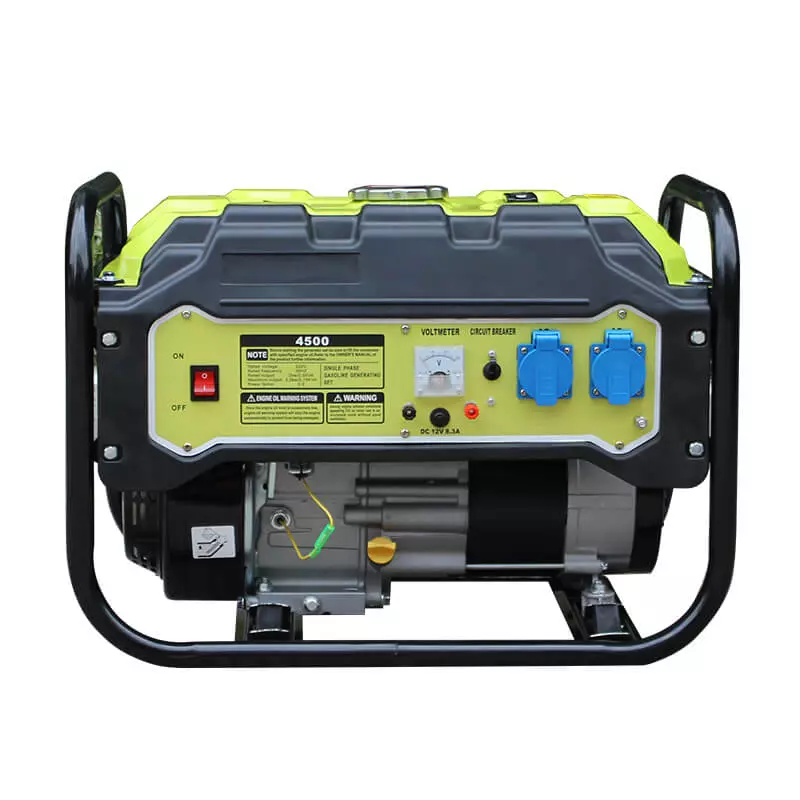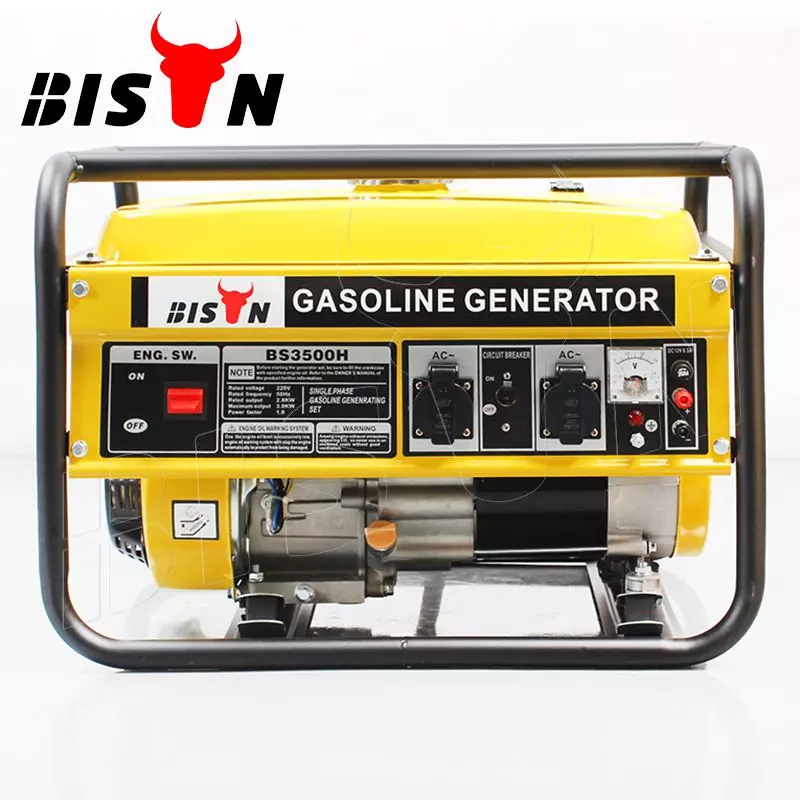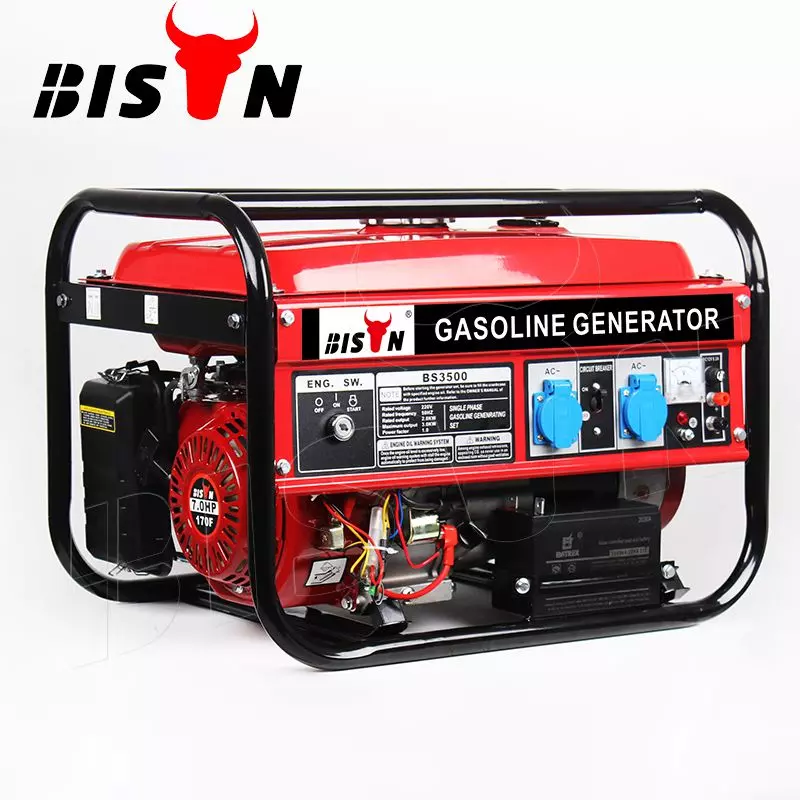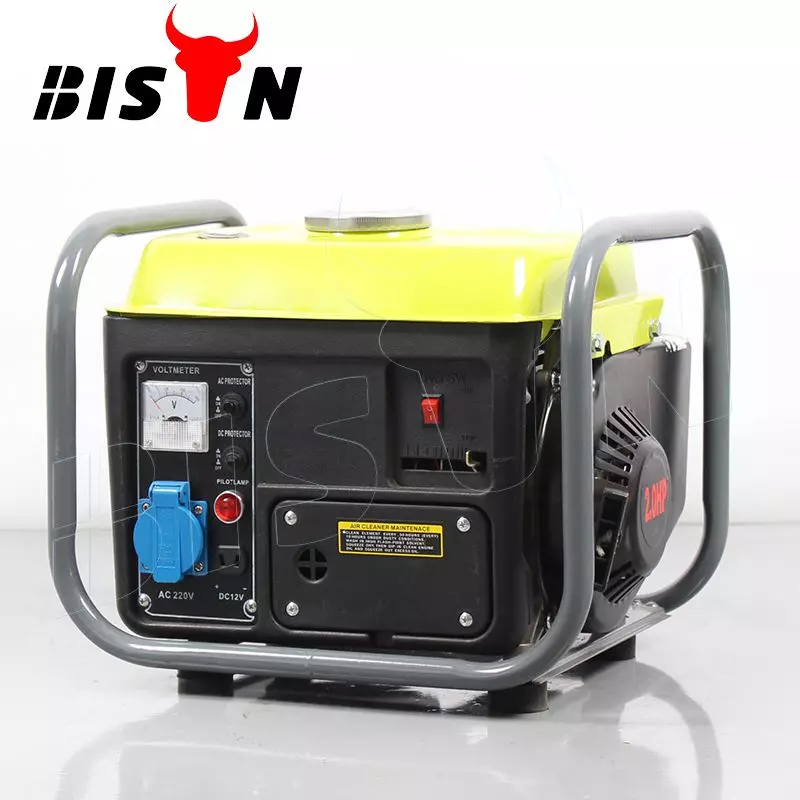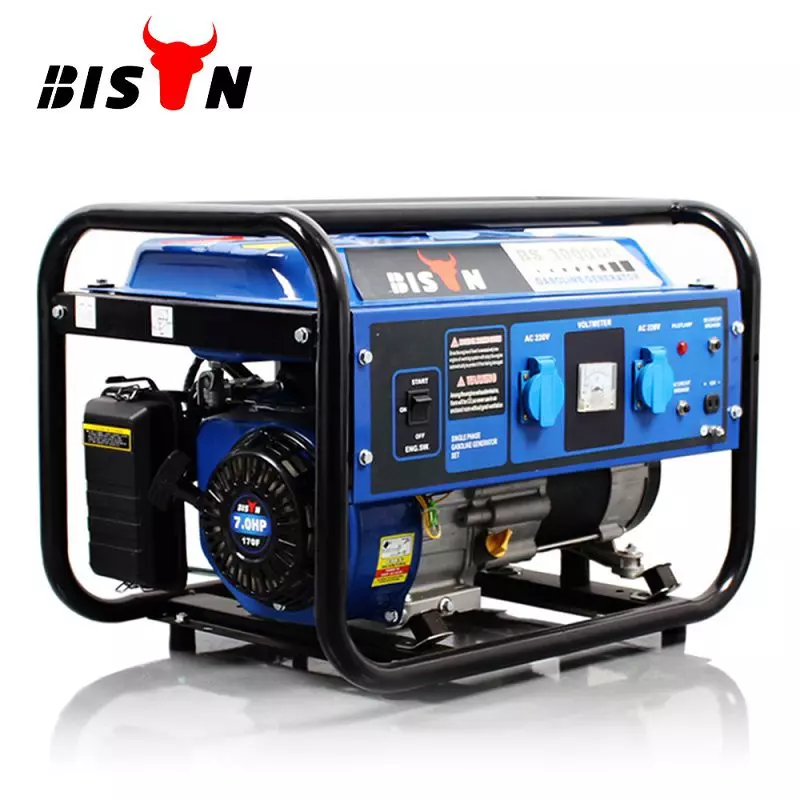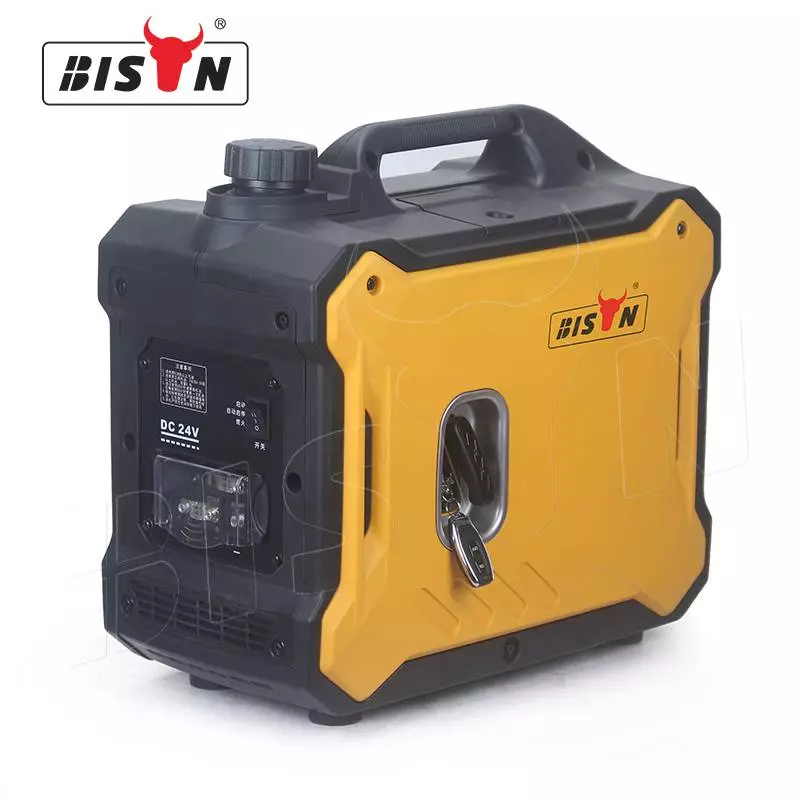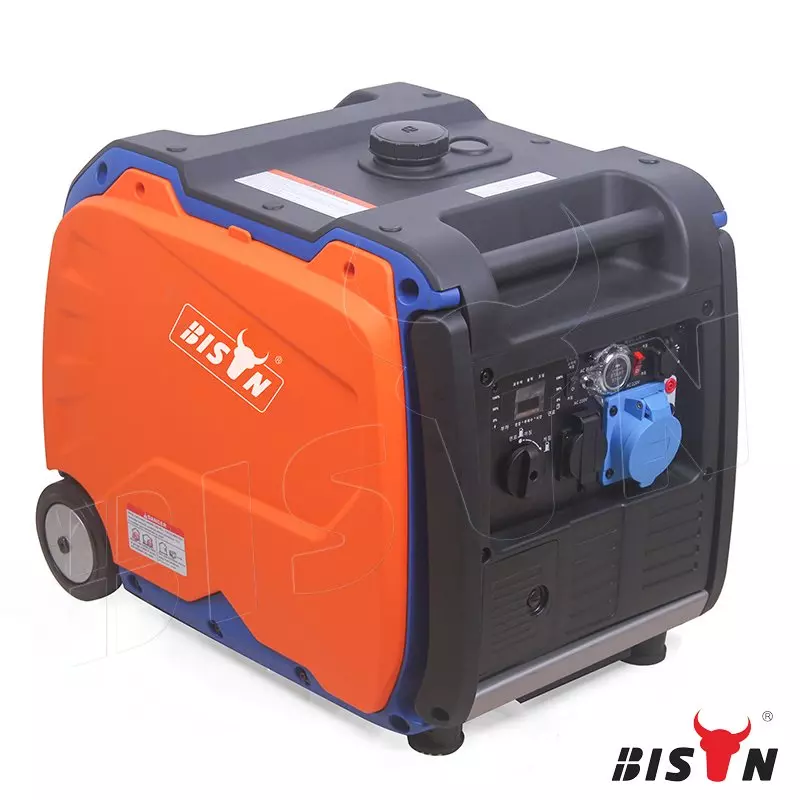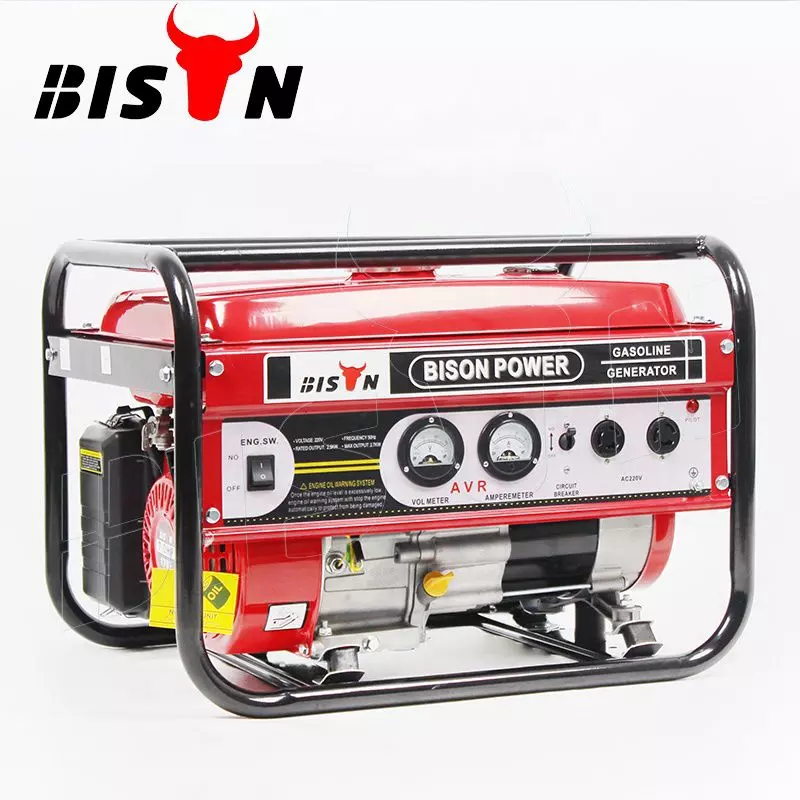What is the portable generator?
BISON Portable generators can provide instant power almost anywhere. Therefore, whether you are camping outdoors, travelling, or adding backup power to your home, portable generators can provide you with the power you need. In most cases, portable generators refer to mobile generators fueled by liquid propane, gasoline, or a mixture of oil and gas. However, some other types of generators are sometimes labeled as portable generators.
How does the portable generator work?
The generator consists of two main components: the BISON engine and the alternator. The engine rotates the alternator to generate AC (alternating current) power, which provides 120 volts or 240 volts as needed through a voltage regulator. AC power is the power source used in our home, so any electrical appliances in the home can be powered by a generator.
Find your perfect generator.
Portable generators are the most common type of generators on the market. This is because they provide the widest range of applications and flexibility of use. There are many differences between portable generators. For example, there are multiple start types, fuel types, and so on. Before purchasing a portable generator, there are many design features, electrical characteristics, and mechanical structures that need to be considered.
How to help you wholesale a suitable portable generator.
Power
The size of generators is measured by their power, not their size. All portable generators have two rated powers. The smaller is called continuous power (aka operating watts), and the larger is called maximum power (aka starting watts). Operating watts are the power that the generator can continuously produce when it is running. Start-up watts are the power it can generate in a short period of time to help start electric electrical equipment, such as air pumps, refrigerators, or window air conditioners.
How to calculate how many power generator needs?
You need to list all the electrical equipment that you want to run on the generator, then write down the running watts and starting watts, and finally choose a higher value to add as much as possible. This is to ensure that the generator can handle any power fluctuations or meet your future Demand.
Below is an overview of the average wattage of common household appliances and tools.
Item | Wattage |
Refrigerator | 100-600 depending on model |
Window air conditioner | 1000 |
Ceiling fan | 120 |
Light bulb | 10-50 |
Laptop | 50-100 |
Cell phone | 7 |
Water pump | 800 |
Electric water heater | 5000 |
Electric stove | 1200 |
Electric drill | 250-1000 depending on model |
Chain saw | 900-1400 depending on model |
The power of portable generators mainly includes three types of less than 2000 watts, 2000-7000 watts and 7000 watts or higher.
Portable generators with a power of less than 2000 watts are the lightest and are usually carried by a handle. Most of these models weigh less than 70 pounds.
The size of portable generators between 2000 watts and 7000 watts varies greatly. These models can be portable designs, or they can be built like carts with wheels.
The greater the power, the larger the size of the generator. The most powerful portable generators are heavy, ranging from 200 to 300 pounds. These are usually industrial portable generators, and they usually have a protective design and can work in harsh environments.
Start system
Fuel powered portable generator can be started in a variety of ways; recoil start, electric start and wireless remote control start and so on. Pull start is the basic element of fuel-powered portable generators, and is usually the cheapest option. By wireless remote start you can start within 80 feet of the generator.
Fuel type
Portable generators that run on gasoline are the most common and cheapest option, but there are also generators that can run on propane, natural gas, diesel, and even solar power. Portable generators powered by liquid propane are priced similar to gasoline generators and are a safe alternative to dangerous gasoline generators. A portable generator powered by natural gas will be slightly more expensive, as it is often used as a home backup generator, incurring additional costs during installation. Diesel powered portable generators are the most expensive. However, diesel generators are more energy efficient and less expensive to maintain, so they may still be an affordable option in the long run. Some generator models also support dual or tri-fuel.
Output
Portable generators are best to have multiple output sockets, which can distribute the load. In addition, for three-phase portable generators, you can choose 220v or 380v power supply according to your needs. In addition, some portable generators designed to provide stable power for sensitive electronic devices also have additional plug types. Some portable generators even have USB ports.
Extra features
None of these additional features are mandatory, but they do make running generators easier. Examples include fuel gauges, maintenance reminders, automatic low fuel shut-off, and parallel connections.
fuel meter
The fuel gauge can visually display the fuel level. This is important information that needs to be mastered during operation to ensure that the generator can continue to work.
Low fuel shut off
When the fuel is low, the low fuel shutdown will automatically shut down the generator. This prevents damage to the generator itself and also prevents damage to all electronic equipment connected to the generator.
Silencer& Muffler
The portable generator is very loud, and you can install a muffler to reduce the noise. The muffler will not completely mute the portable generator, but it does help significantly. If you want to use portable generators in public places such as campsites, please check for noise regulations. This allows you to understand the necessity of installing silencers for portable generators.
Weatherproof cover
Portable generators are not waterproof and can be easily damaged in bad weather conditions. You can store an idle portable generator indoors, but it is more difficult to move a very large and heavy commercial portable generator, so it is easier to keep it intact with a weatherproof cover in one place.
Additional accessories
To properly install and use a portable generator, you need certain accessories. Some accessories can ensure safety during operation, and some accessories can simplify the maintenance and start-up process.
Transfer switch
The transfer switch can switch the load from one power source to another, preventing the generator from starting at the same time as the normal power supply. When both power sources are connected, you will face the risk of fire and burned circuits. In the event of a power failure, the transfer switch switches the load from the main power supply to the generator. There are two types of transfer switches on the market; an automatic transfer switch and a manual transfer switch.
Heavy extension cord
Since fuel-driven portable generators must be placed far away from buildings, extension cords are needed to expand the power supply range of the generator.
Maintenance kit
Although maintenance work for portable generators is minimal, some repairs are still required to ensure that everything is still running smoothly. Maintenance you may perform: replace the spark plug after every 100 hours of use; replace the oil and oil filter every 50 – 60 hours of use; according to the frequency of use of the portable generator, the air filter should be replaced once or twice a year;
Cold weather kit
If you use the portable generator in the cold environment, you also need a cold weather kit. The cold weather kit contains a battery heater and oil heater that can be activated by low temperatures. Ensure smooth electric start and prevent oil from thickening due to cold weather.
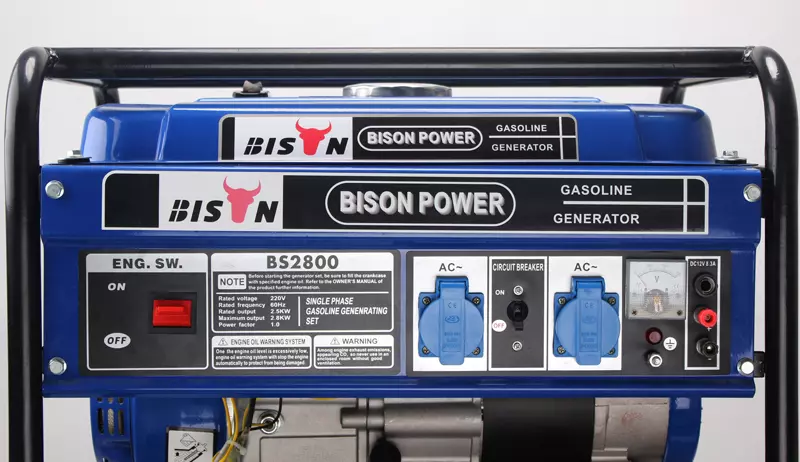
How to use BISON portable generator correctly?
1. Please read the user manual before using the generator and follow all instructions in the manual.
2. Before using the generator, please read and follow all labels and instructions.
3. Make sure your portable generator is located in an outdoor area with good ventilation. It can only be used outdoors, and keep away from windows, doors and vents. Because the exhaust gas from the generator contains carbon monoxide, which is a colorless, odorless, toxic gas.
4. Make sure that the area is free of any flammable materials and complies with all local laws regarding placement near buildings or houses.
5. Make sure that all wires are properly grounded and insulated, and your connections are secure.
6. When you need to refuel or repair the generator, you must turn off the generator and wait for it to cool down before working. Adding oil or repairing the generator while it is running may cause a fire or cause serious injury.
